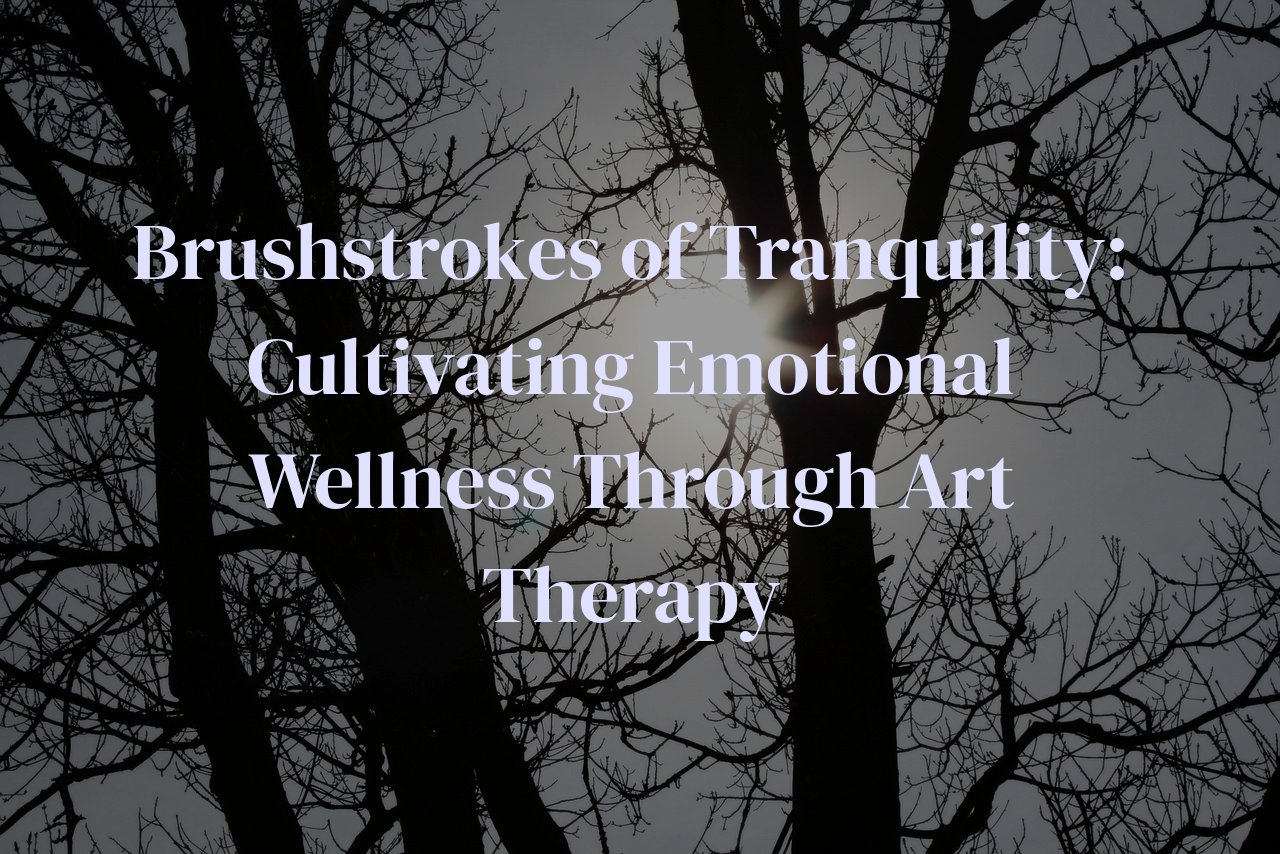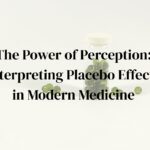
Embarking on a journey through the colors and contours of our inner psyche, ‘Brushstrokes of Tranquility: Cultivating Emotional Wellness Through Art Therapy’ explores the transformative union of creativity and mental health. With an emphasis on the healing power of artistic expression, this article delves into the impact that art therapy has on nourishing and bolstering emotional well-being. Uncovering the layers of one’s emotions can be a delicate process, and through this post, readers will discover the specific mechanisms by which art therapy fosters emotional balance and catharsis, as well as practical insights into how this therapeutic approach can benefit their own mental landscape.
Table of Contents
Unveiling Art Therapy: A Gateway to Healing Verge
Art therapy emerges as a compelling portal to emotional restoration, beckoning a journey into the psyche’s colorful corridors. Its essence lies in the belief that creativity and the act of making art can deeply influence an individual’s ability to heal emotionally and mentally. By merging psychological concepts with artistic creation, art therapy facilitates a unique manner for people to express their deepest sentiments and thoughts without the need for words, making it an inclusive tool for those who find conventional communication challenging.
Picture a space where emotions are not judged but painted, sculpted, or sketched out, allowing for an intimate dialogue between the inner self and the external medium. This process is cathartic, often bringing subconscious concerns to the surface, aiding in their recognition and processing. Art therapy is not just about creating aesthetically pleasing artifacts; it’s a reflective practice where the act itself is therapeutic, rather than the end product. Here, the brush, the clay, or the camera captures what may have been unsaid, unacknowledged, or unhealed.
Under the guidance of a licensed art therapist, individuals are led through a series of creative exercises that are tailored to unblock emotional barriers and promote psychological resilience. This modality is versatile, serving a broad demographic ranging from children with communication hurdles to adults grappling with mental health challenges, and even older persons contending with the complexities of aging.
The efficacy of art therapy is supported by a growing body of research illustrating its impact on reducing symptoms of depression, anxiety, and post-traumatic stress disorder (PTSD). Furthermore, it fosters enhanced self-esteem, self-awareness, and emotional release. As a gateway to healing, art therapy offers a tranquil passage away from the chaos of inner turmoil, towards a landscape of emotional clarity and serenity. It’s within this creative refuge that many find the strength to confront and overcome their struggles, curating a collection of personal victories with each brushstroke.
Indeed, the unveiling of art therapy as a therapeutic approach marks the beginning of a profound exploration into the self, allowing individuals to face their emotional reality with the tools of artistic expression. The intersection of creativity and psychological well-being creates a powerful blend, a transformative experience that carries the potential to reshape lives and traverse the path of healing with delicate, yet deliberate, brushstrokes of tranquility.
Emotional Landscapes Painted in Silence: Deep Dives Into Self-Expression
In the realm of art therapy, ‘Emotional Landscapes Painted in Silence’ stands as a metaphor for the quiet yet profound journey of self-discovery and expression that individuals embark upon. It is here, amidst the tranquility of this process, that the subtle strokes of a brush, the blend of colors, and the textures that emerge on canvas or paper become the narrative of one’s mental state—a voice when words fail to capture the complexity of emotions.
Art therapy facilitates a deep dive into self-expression, enabling a person to unlock inner feelings that might be challenging to articulate verbally. The act of creating becomes a silent dialogue, where the art speaks volumes, mirroring sentiments like joy, distress, resilience, or turmoil. This profound connection with one’s inner self through art can lead to cathartic experiences, helping individuals confront and work through suppressed emotions and past traumas.
The power of this pictorial silence is that it allows for the emergence of subconscious thoughts and memories, which might otherwise remain obscured. In this space, the therapist guides the individual towards a mindful reflection of their artwork, prompting an understanding of the emotional symbols and metaphors displayed. Through this practice, a person can begin to recognize patterns, emotional responses, and aspects of their persona that might have been neglected or overlooked.
The serenity of conveying emotion through art, without the need for immediate analysis or judgment, offers a sanctuary for the soul. This silent communion with one’s emotions can fortify the mind-body connection, nurturing a sense of inner peace and emotional resilience. Embracing the stillness that comes with painting or sculpting allows individuals to meditate on their feelings, fostering a healing environment where emotional wounds can be tenderly acknowledged and addressed.
Transforming feelings into tangible art pieces gives them a form, a shape that can be contemplated and understood from a fresh perspective. As silent sentinels, these artworks stand witness to the emotional evolution of their creators, holding space for growth, reflection, and eventually, tranquility. ‘Emotional Landscapes Painted in Silence’ isn’t merely about art making; it’s a practice of soulful introspection and healing—a brushstroke of tranquility along the canvas of life.
A Palette of Emotions: The Transformative Effects of Creativity
The act of creating art is not just a process of producing an aesthetic piece, but a profound journey into the landscape of one’s emotions. Engaging in art therapy taps into the transformational power of creativity, which goes beyond the canvas or the clay to build a bridge toward emotional wellness. Creativity in art therapy serves as an agent of change, enabling the unspoken to be communicated through brushstrokes, colors, and shapes. It invites an individual to explore the depths of their emotional reservoirs, often discovering feelings and thoughts that were previously obscured or unacknowledged.
When individuals immerse themselves in creative endeavors, the mind often enters a state of flow, an immersive and deeply focusing experience where time seems to vanish. This state can both shield from the cacophony of daily stressors and provide a playground for the subconscious to express itself. Within this liberated realm, the rules of language and logic loosen, allowing for a freedom that fosters healing and growth. The rhythm of dabbing paint, the soothing motion of shaping clay, or the precise act of drawing lines can become a rhythmic mantra, fostering an inner peace that radiates outward.
The randomness and diversity found in art therapy offer a spectrum of avenues for expression. Each color, texture, and medium in an artist’s palette carries potential for different emotional releases. Bold reds can channel deep-seated anger or passion, soft blues might articulate a sense of calm or sadness, while vibrant yellows could echo happiness and optimism. Diversity in artistic expression ensures that there is no one-size-fits-all approach, rather, it is a deeply individual experience where one discovers their unique emotional voice.
As one traverses the path of art therapy, they inevitably encounter an increase in empathy, both for themselves and others. Creating art provides a conduit for emotion, enabling the sharing of intimate parts of one’s psyche without the vulnerability of direct confrontation. By observing one’s own creations, there is a gentle but poignant opportunity to empathize with the narrative being told. Furthermore, in group settings, shared creative activities foster a communal empathy, as participants witness and appreciate the emotional journeys of their peers through their artwork.
The transformative effects of creativity within art therapy arise from its inherent ability to break down internal barriers. It encourages an embrace of emotion in its myriad forms, invites randomness and rejects consistency, allowing a person to explore the vastness of their emotional scope. The imaginative leaps taken in art can illuminate understanding, cultivate resilience, and ultimately guide the artist toward a greater sense of emotional well-being.
Art Therapy in Practice: Case Studies and Personal Triumphs
Exploring art therapy through the lens of real-world applications brings to light its profound impact on emotional healing and personal development. Diving into case studies, we encounter stories like that of Emily, whose anxiety found solace in the abstract swirls of paint. Through the guidance of a licensed art therapist, her canvases became a vessel for the turmoil inside, and the act of creation eased her into a calmer state of mind. Each session was a step toward managing her worries, not through words, but through strokes and colors that provided a language of their own.
Another poignant example is seen in the journey of David, a veteran grappling with PTSD. Traditional therapies had hit a wall, but in the refuge of his art, a new world unfolded. Sculpting became his voice, where the pressure of the clay under his fingers was a tactile narrative of his inner battles. The art therapy space facilitated not just a hobby, but a lifeline, allowing him face his demons in a safe and creative environment, ultimately leading to significant advancements in his overall mental health.
Then there’s the story of Anna, a teenager battling depression and social anxiety. Amidst the fog of her struggles, art therapy sessions became a beacon of light. Sketching and collage work enabled her to piece together her fragmented self-esteem, constructing a more confident and happier self. The success of these sessions not only improved her emotional state, but spilled over into her social interactions, fostering better relationships with her peers and family.
In group settings, art therapy has also demonstrated its collective healing power. For instance, a group of breast cancer survivors found common ground and solidarity through shared artistic projects. These sessions weren’t just about creating art; they were about weaving a tapestry of support, understanding, and recovery, with each participant contributing to a larger narrative of triumph over illness.
The individual stories of triumph in emotional wellness through art therapy are countless. Integrating art therapy into one’s routine doesn’t require mastery of artistic skills but an openness to the experience. Cultivating a daily practice can start with simple activities like doodling, or engaging with coloring books, which are readily available and recognized for their stress-reducing qualities. The key is for individuals to discover the therapeutic modality that resonates with them, offering a peaceful refuge from the chaos of life and a medium for expressing the inexpressible.
Cultivating a Daily Practice: Integrating Art Therapy into Your Routine
Embarking on the journey of emotional wellness through art therapy can transform not just moments but days, nurturing a sustained state of inner peace and awareness. To incorporate art therapy into one’s daily routine, it’s essential to create a personalized ‘creative corner’—a designated, inviting space that beckons one to engage with their artistic side. This space can be a quiet corner of a room adorned with comfortable seating and a selection of art supplies that inspire creativity and introspection.
Starting with simple exercises is crucial, to immerse oneself gently into the practice. Daily doodling or free drawing, even for just a few minutes, can serve as a meditative tool, offering a blank canvas to express the subconscious. These creative bursts can evolve over time into more structured projects, such as painting or sculpture, carving out a time in the day when emotions can flow freely into art.
Journaling through art is another profound method. Here, one can use mixed media collage or sketching to capture the essence of the day’s emotions and events. This visual diary is not just a chronicle of days but an emotional landscape that reflects personal growth and emotional shifts. It’s a conversation with the self, made richer with colors and textures, each page a testament to life’s ebbs and flows.
Setting weekly themes can also add structure and depth to the practice. This approach allows for exploration of specific emotional realms through art—dedicating a week to gratitude, another to resilience, or to joy. Each theme can inspire a range of artworks that embody the chosen emotion, inviting a deeper connection with one’s inner experiences.
Furthermore, participating in community art therapy sessions or workshops, even virtually, can offer a sense of solidarity and shared growth. It underscores the universality of human emotion and the collective journey of healing through art. Such interactions can enrich one’s practice and introduce new perspectives and techniques.
Integrating art therapy into daily life is about embracing the creative process as a regular practice of self-care. It’s about giving oneself permission to pause, reflect, create, and find solace in the brushstrokes of tranquility that paint the canvas of our lives. With patience and commitment, art becomes not just a therapy but a companion on the voyage to emotional wellness.
Conclusion
In the final brushstroke of our exploration, it’s clear that art therapy stands as a profound testament to the intricate relationship between artistic creation and emotional recovery. By embracing this practice, we allow ourselves to navigate through our emotional undercurrents with grace, leading to a more serene and balanced state of mind. As we encapsulate our thoughts and feelings in visual form, art therapy illuminates the path to emotional wellness, proving that sometimes, the most profound healing comes not from words, but from the silent dialogue between our heart and the canvas.



